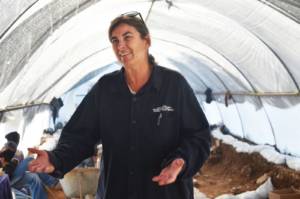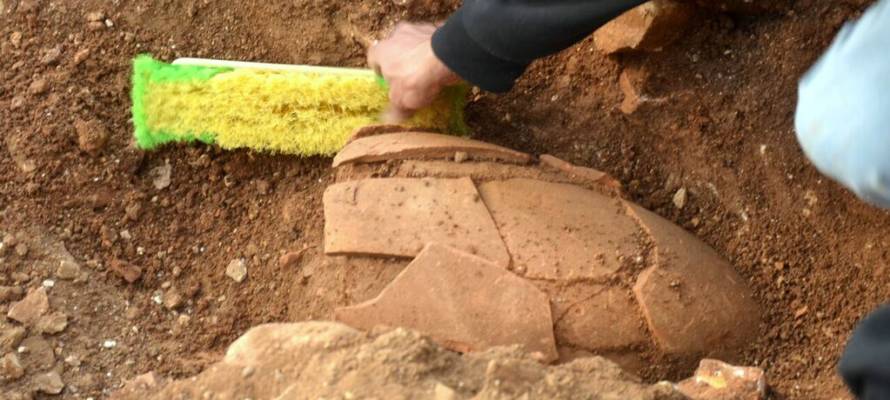Archaeologists discovered fascinating evidence confirming historian Josephus’ account of the breaching of Jerusalem’s ‘Third Wall’ by the Romans at the end of the Second Temple period 2,000 years ago.
Compelling evidence of the battlefield and the breaching of the Third Wall that surrounded Jerusalem in 70 C.E. was uncovered last winter in the Russian Compound in the city center, the Israel Antiquities Authority (IAA) announced on Thursday.
The finds were discovered in an archaeological excavation conducted by the IAA in the location where the new campus of the Bezalel Academy of Arts and Design is slated to be constructed.
During the course of the excavation, archaeologists discovered the remains of a tower jutting from the city wall. Opposite the tower’s western facade were scores of ballista and sling stones that the Romans had fired from catapults towards the Jewish guards defending the wall, who were stationed at the top of the tower.
According to Dr. Rina Avner and Kfir Arbib, excavation directors on behalf of the Israel Antiquities Authority, “This is a fascinating testimony of the intensive bombardment by the Roman army, led by Titus, on their way to conquering the city and destroying the Second Temple. The bombardment was intended to attack the sentries guarding the wall and provide cover for the Roman forces so they could approach the wall with battering rams and thereby breach the city’s defenses.”
The historian Josephus, an eyewitness to the war, provided many details about this wall. According to him, the wall was designed to protect the new quarter of the city that had developed outside its boundaries, north of the two existing city walls. This quarter was named Beit Zeita. The building of the Third Wall was begun by Agrippa I; however, he suspended its construction so as not to incur the wrath of Emperor Claudius and to dispel any doubts regarding his loyalty. The construction of the Third Wall was resumed some two decades later by the defenders of Jerusalem, as part of fortifying the city and the Jewish rebels’ preparations for the Great Revolt against Rome.

Dr. Rina Avner, excavation director (Yoli Schwartz/Courtesy IAA)
Josephus described in detail the route of the wall that began at Hippicus Tower, which is now identified with David’s Citadel. From there the wall continued north to the enormous Psephinus Tower, which defended the northwestern corner of the city wall. At that point the wall turned east and descended toward the Tomb of Queen Helena, which is identified with the place known as the Tombs of the Kings.
An unresolved debate among researchers has been ongoing since the early 20th century regarding the identity of the Third Wall and the question concerning Jerusalem’s boundaries on the eve of the Roman onslaught led by Titus. It seems that the new discovery in the Russian Compound is proof of the wall’s existence in this area.
The excavation findings will be presented at a conference titled ““New Studies in the archaeology of Jerusalem and its Region,” scheduled for next Thursday at the Mount Scopus campus of the Hebrew University of Jerusalem.
Courtesy: IAA










